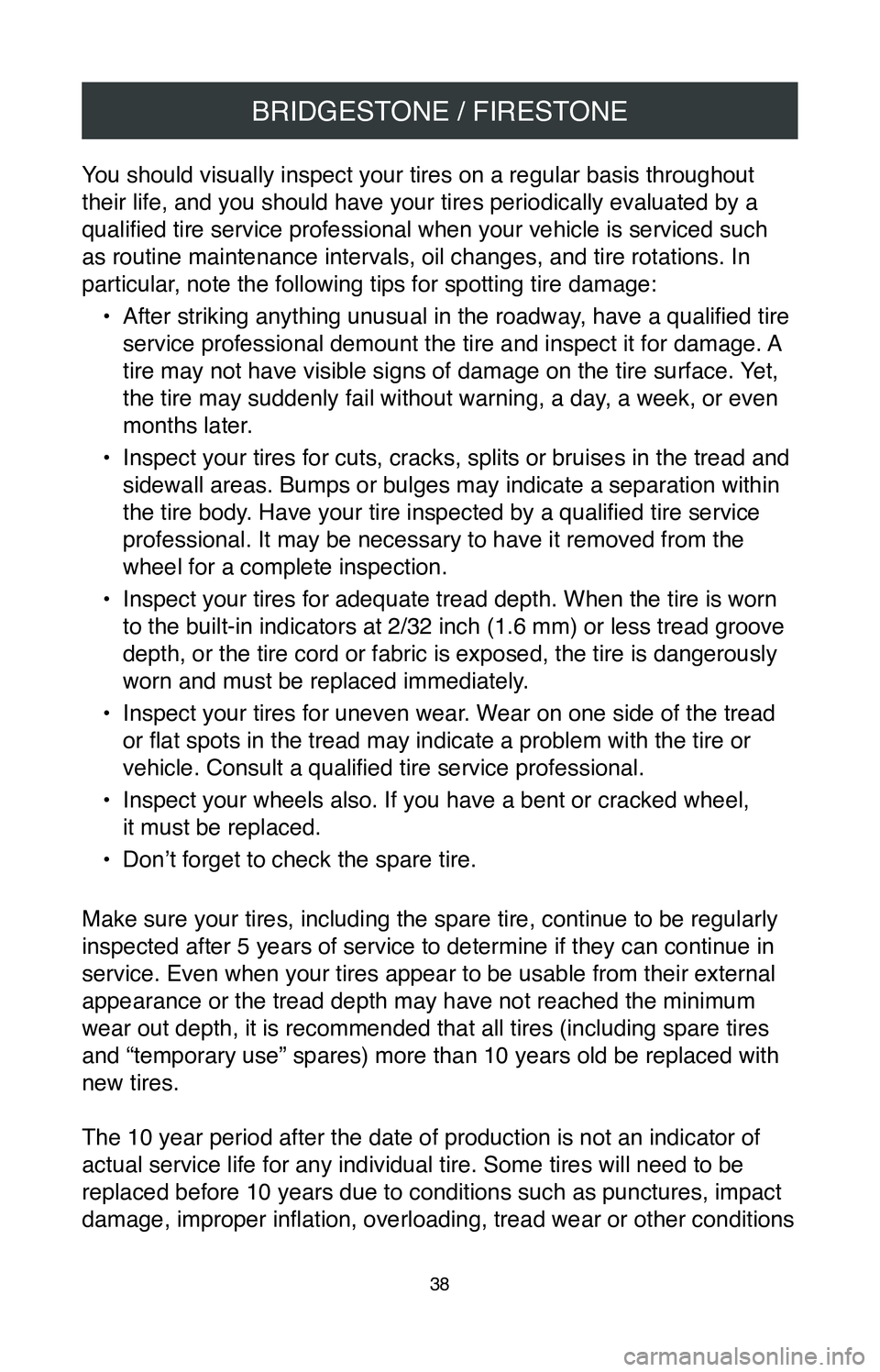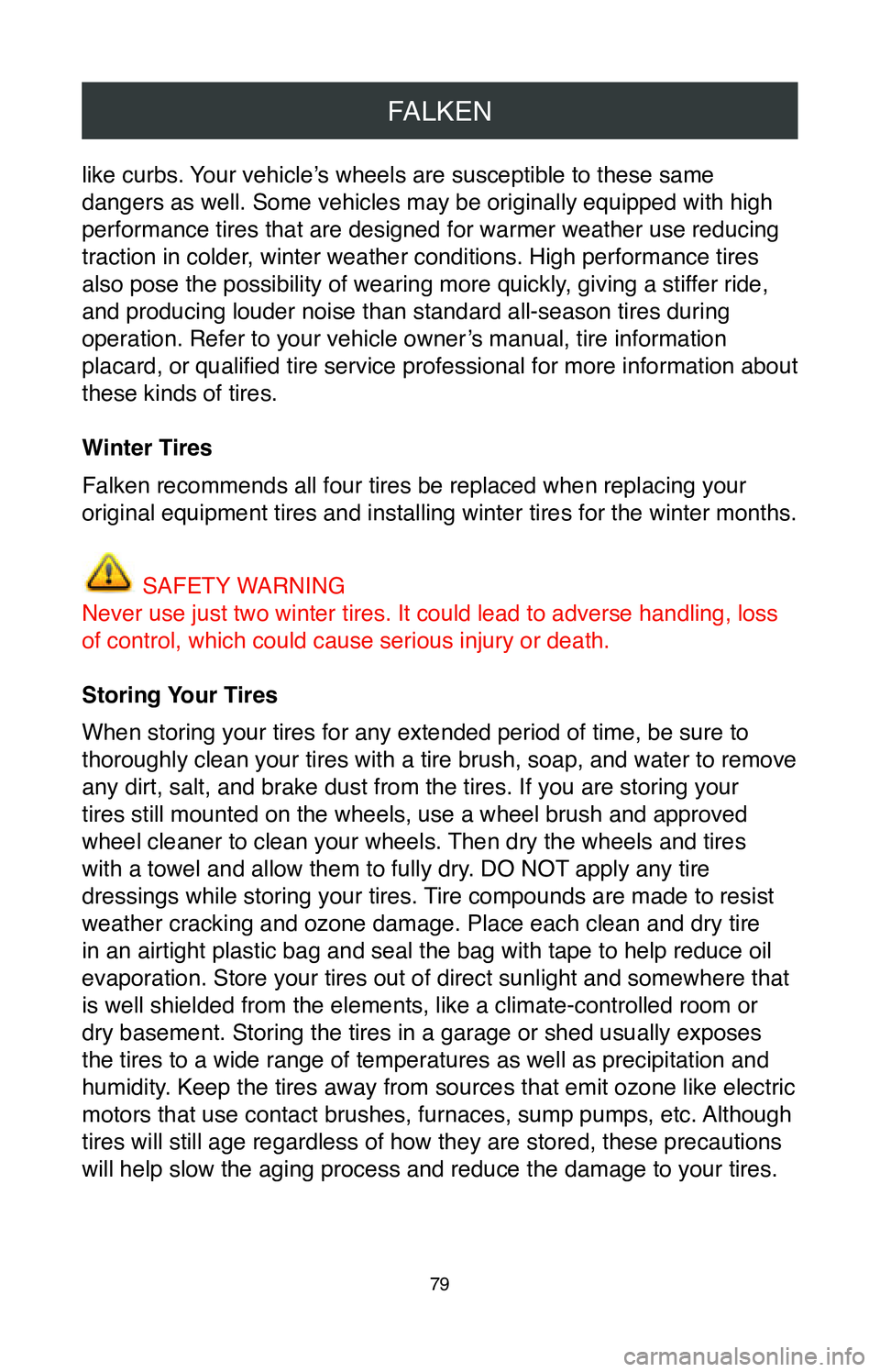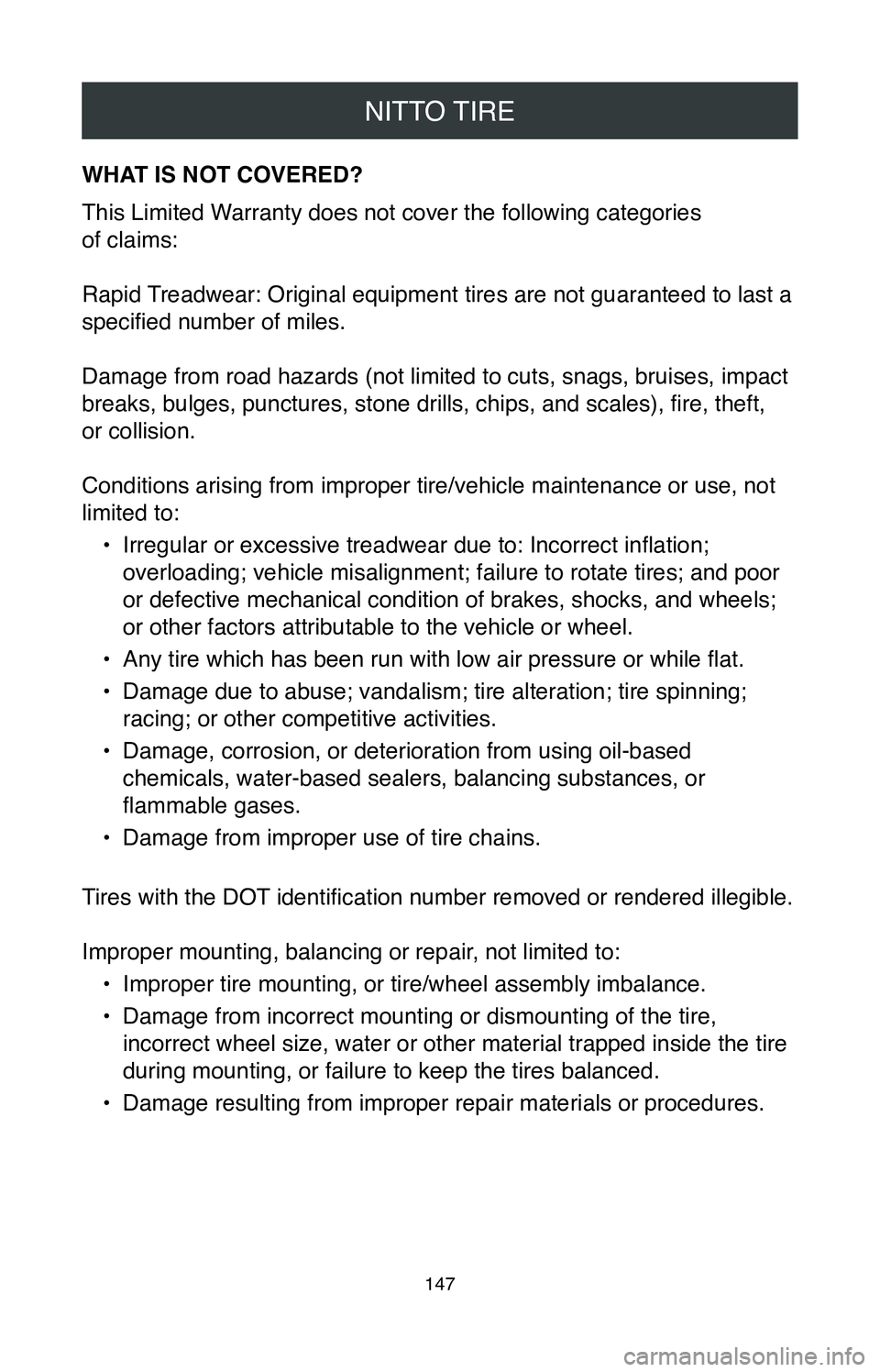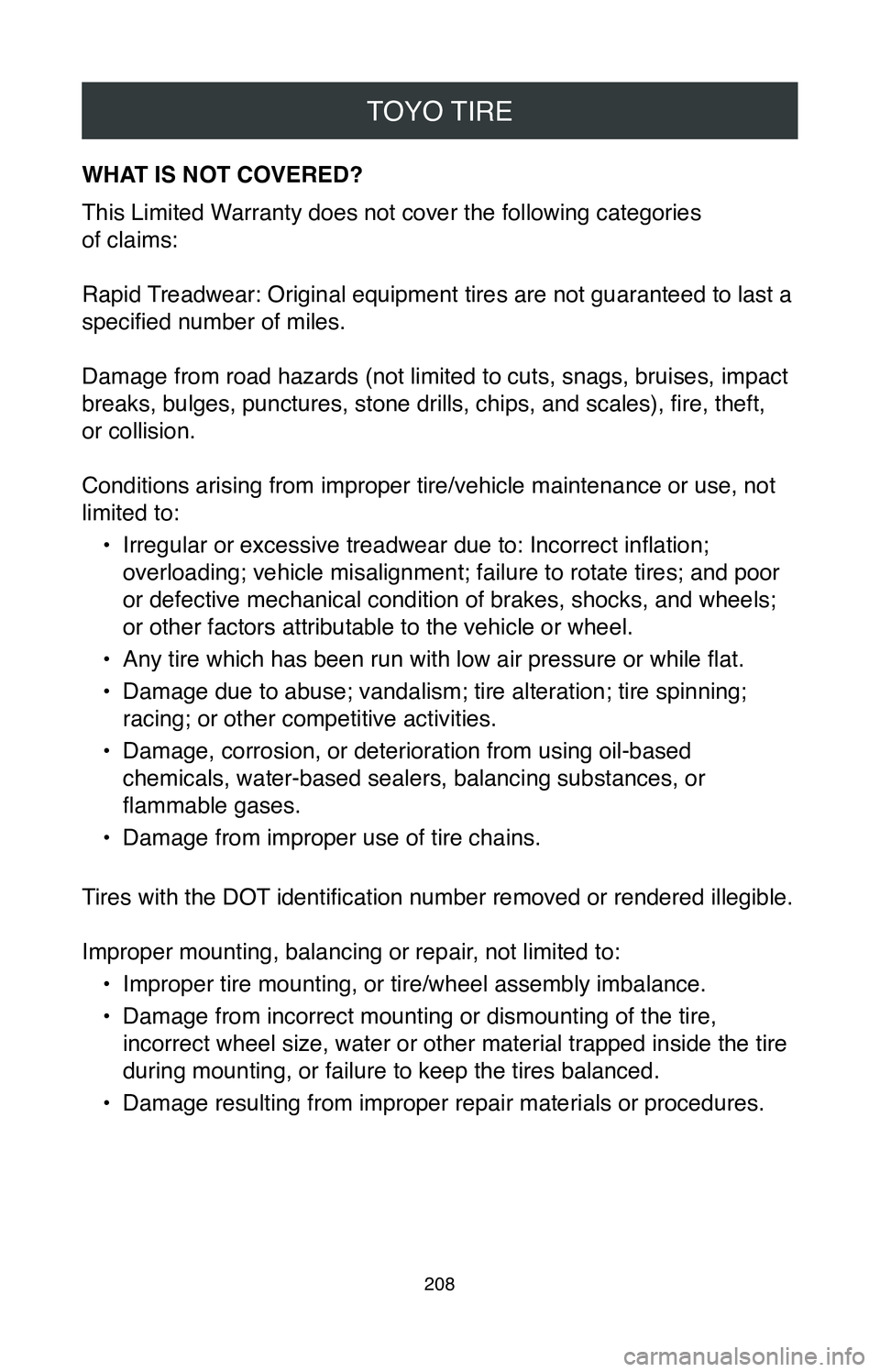oil TOYOTA CAMRY HYBRID 2020 Warranties & Maintenance Guides (in English)
[x] Cancel search | Manufacturer: TOYOTA, Model Year: 2020, Model line: CAMRY HYBRID, Model: TOYOTA CAMRY HYBRID 2020Pages: 260, PDF Size: 8.54 MB
Page 40 of 260

BRIDGESTONE / FIRESTONE
38
You should visually inspect your tires on a regular basis throughout
their life, and you should have your tires periodically evaluated by a
qualified tire service professional when your vehicle is serviced such
as routine maintenance intervals, oil changes, and tire rotations. In
particular, note the following tips for spotting tire damage:•
After striking anything unusual in the roadway, have a qualified tire
service professional demount the tire and inspect it for damage. A
tire may not have visible signs of damage on the tire surface. Yet,
the tire may suddenly fail without warning, a day, a week, or even
months later.
•
Inspect your tires for cuts, cracks, splits or bruises in the tread and \
sidewall areas. Bumps or bulges may indicate a separation within
the tire body. Have your tire inspected by a qualified tire service
professional. It may be necessary to have it removed from the
wheel for a complete inspection.
•
Inspect your tires for adequate tread depth. When the tire is worn
to the built-in indicators at 2/32 inch (1.6 mm) or less tread groove
depth, or the tire cord or fabric is exposed, the tire is dangerously
worn and must be replaced immediately.
•
Inspect your tires for uneven wear. Wear on one side of the tread
or flat spots in the tread may indicate a problem with the tire or
vehicle. Consult a qualified tire service professional.
•
Inspect your wheels also. If you have a bent or cracked wheel,
it must be replaced.
•
Don’t forget to check the spare tire.
Make sure your tires, including the spare tire, continue to be regularly\
inspected after 5 years of service to determine if they can continue in \
service. Even when your tires appear to be usable from their external
appearance or the tread depth may have not reached the minimum
wear out depth, it is recommended that all tires (including spare tires
and “temporary use” spares) more than 10 years old be replaced wi\
th
new tires.
The 10 year period after the date of production is not an indicator of
actual service life for any individual tire. Some tires will need to be \
replaced before 10 years due to conditions such as punctures, impact
damage, improper inflation, overloading, tread wear or other conditions
Page 81 of 260

FALKEN
79
like curbs. Your vehicle’s wheels are susceptible to these same
dangers as well. Some vehicles may be originally equipped with high
performance tires that are designed for warmer weather use reducing
traction in colder, winter weather conditions. High performance tires
also pose the possibility of wearing more quickly, giving a stiffer ride,
and producing louder noise than standard all-season tires during
operation. Refer to your vehicle owner’s manual, tire information
placard, or qualified tire service professional for more information about
these kinds of tires.
Winter Tires
Falken recommends all four tires be replaced when replacing your
original equipment tires and installing winter tires for the winter mont\
hs.
SAFETY WARNING
Never use just two winter tires. It could lead to adverse handling, loss
of control, which could cause serious injury or death.
Storing Your Tires
When storing your tires for any extended period of time, be sure to
thoroughly clean your tires with a tire brush, soap, and water to remove\
any dirt, salt, and brake dust from the tires. If you are storing your
tires still mounted on the wheels, use a wheel brush and approved
wheel cleaner to clean your wheels. Then dry the wheels and tires
with a towel and allow them to fully dry. DO NOT apply any tire
dressings while storing your tires. Tire compounds are made to resist
weather cracking and ozone damage. Place each clean and dry tire
in an airtight plastic bag and seal the bag with tape to help reduce oil\
evaporation. Store your tires out of direct sunlight and somewhere that \
is well shielded from the elements, like a climate-controlled room or
dry basement. Storing the tires in a garage or shed usually exposes
the tires to a wide range of temperatures as well as precipitation and
humidity. Keep the tires away from sources that emit ozone like electric
motors that use contact brushes, furnaces, sump pumps, etc. Although
tires will still age regardless of how they are stored, these precaution\
s
will help slow the aging process and reduce the damage to your tires.
Page 149 of 260

NITTO TIRE
147
WHAT IS NOT COVERED?
This Limited Warranty does not cover the following categories
of claims:
Rapid Treadwear: Original equipment tires are not guaranteed to last a
specified number of miles.
Damage from road hazards (not limited to cuts, snags, bruises, impact
breaks, bulges, punctures, stone drills, chips, and scales), fire, theft,
or collision.
Conditions arising from improper tire/vehicle maintenance or use, not
limited to:
•
Irregular or excessive treadwear due to: Incorrect inflation;
overloading; vehicle misalignment; failure to rotate tires; and poor
or defective mechanical condition of brakes, shocks, and wheels;
or other factors attributable to the vehicle or wheel.
•
Any tire which has been run with low air pressure or while flat.
•
Damage due to abuse; vandalism; tire alteration; tire spinning;
racing; or other competitive activities.
•
Damage, corrosion, or deterioration from using oil-based
chemicals, water-based sealers, balancing substances, or
flammable gases.
•
Damage from improper use of tire chains.
Tires with the DOT identification number removed or rendered illegible.
Improper mounting, balancing or repair, not limited to: •
Improper tire mounting, or tire/wheel assembly imbalance.
•
Damage from incorrect mounting or dismounting of the tire,
incorrect wheel size, water or other material trapped inside the tire
during mounting, or failure to keep the tires balanced.
•
Damage resulting from improper repair materials or procedures.
Page 210 of 260

TOYO TIRE
208
WHAT IS NOT COVERED?
This Limited Warranty does not cover the following categories
of claims:
Rapid Treadwear: Original equipment tires are not guaranteed to last a
specified number of miles.
Damage from road hazards (not limited to cuts, snags, bruises, impact
breaks, bulges, punctures, stone drills, chips, and scales), fire, theft,
or collision.
Conditions arising from improper tire/vehicle maintenance or use, not
limited to:
•
Irregular or excessive treadwear due to: Incorrect inflation;
overloading; vehicle misalignment; failure to rotate tires; and poor
or defective mechanical condition of brakes, shocks, and wheels;
or other factors attributable to the vehicle or wheel.
•
Any tire which has been run with low air pressure or while flat.
•
Damage due to abuse; vandalism; tire alteration; tire spinning;
racing; or other competitive activities.
•
Damage, corrosion, or deterioration from using oil-based
chemicals, water-based sealers, balancing substances, or
flammable gases.
•
Damage from improper use of tire chains.
Tires with the DOT identification number removed or rendered illegible.
Improper mounting, balancing or repair, not limited to: •
Improper tire mounting, or tire/wheel assembly imbalance.
•
Damage from incorrect mounting or dismounting of the tire,
incorrect wheel size, water or other material trapped inside the tire
during mounting, or failure to keep the tires balanced.
•
Damage resulting from improper repair materials or procedures.